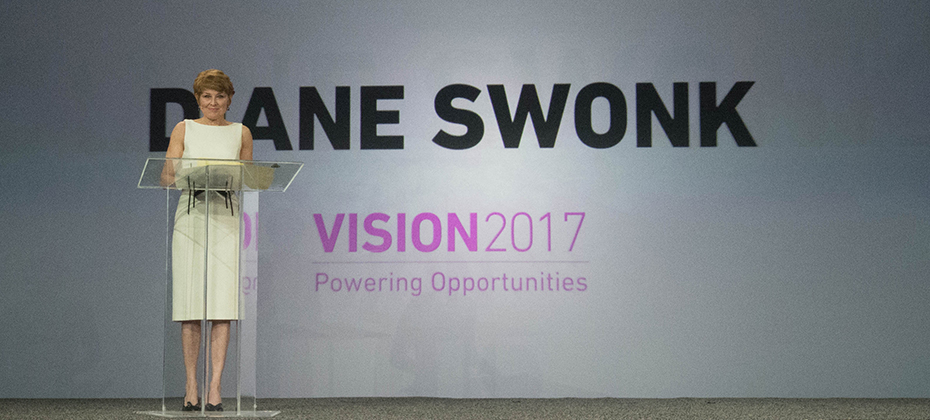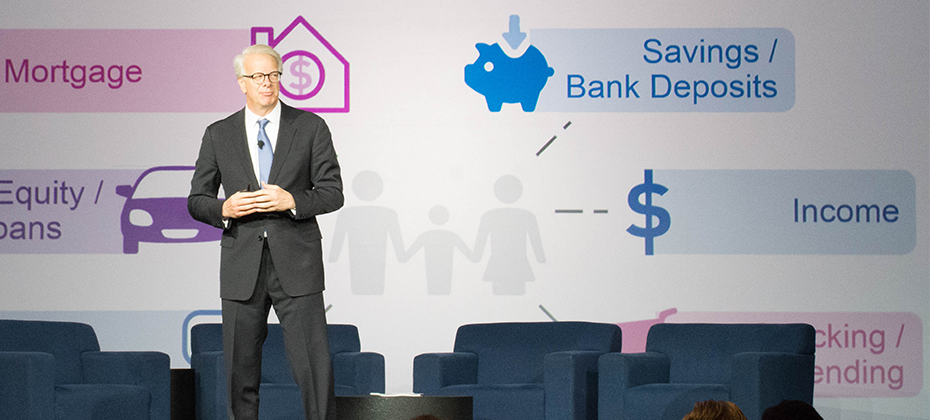All posts by Kerry Rivera

As soon as the holiday decorations are packed away and Americans reign in the New Year, the advertisements shift to two of our favorite themes – weight loss and taxes. No wonder the “blues” kick in during February. While taxes aren’t due until April 17, the months of January, February and March have consumers prepping to file. Coincidentally, it is also a big season for lenders to collect after the high-spending months of October through December. “Knowing which of your customers may receive a refund is critical,” said Colleen Rose, an Experian product manager specializing in the collections industry. “This information can help lenders create a strategy to capitalize on this important segment during the compressed collections window.” The industry has become more familiar with trended data and its ability to predict how consumers are faring on the credit score slider, but many don’t know that it has also proven popular in identifying people who may get a tax refund, and who is likely to use a refund to pay down delinquent balances. The past two tax seasons are evaluated to provide a complete picture of a customer’s behavior during tax refund season. Balance, credit limit and other historical fields are incorporated with tradeline-level data to determine who paid down their delinquent balances during this time. According to the IRS, in fiscal year 2016, the average individual income tax refund was about $3,050, so it’s a prime time for consumers to come into some unexpected cash to either pay down debt or spend. It’s estimated that 35% of consumers who get a refund will pay down debt. “Using Experian’s trended data attributes, we’ve identified past-due customers who paid down a delinquent tradeline balance by at least 10% and made a large payment during tax season,” said Rose. “With these specific attributes, we can help clients target a very desirable population during the critical collections months, helping them to refine their campaigns and create offers geared toward this population.” Anticipating who is likely to receive a refund and use it to pay down debt can influence how collections departments develop their messaging, call outreach and mailings. And for consumers who owe multiple debts, these well-timed touchpoints and messages could influence who they pay back first. The collectors with the best data, once again win, with trended data providing the secret sauce for predictions. ‘Tis the season for taxes.

Student loan debt is weighing down Americans of all generations, but a college education is still prized as the ticket to opportunity. So will the debt continue to climb? Where will students turn for funding? We interviewed Vince Passione, founder and CEO of LendKey, a lending-as-a-service platform specializing in student lending, to gain his perspective on the state of student lending and how the space is evolving for both consumers and lenders. We’ve all seen the headlines about U.S. student loan debt now accounting for $1.4 trillion. The majority of these loans are government-funded, but do you see this shifting? There are many factors at play here. Tuition is rising rapidly and will soon outpace the current level of governmental support available to students searching for loans. Meanwhile, today’s geopolitical climate signals that the current levels of federal funding will also decrease. With these two confounding trends, the need for competitively priced private financing and refinancing options will increase. The student loan industry will shift toward private lenders such as credit unions and banks in order for students to continue to obtain the funds they need for tuition and other college expenses. The key to helping this transition happen is for banks and credit unions to adopt the user-friendly technology platforms that appeal to these prospective student borrowers. Your end-to-end cloud-based technology platform enables lenders to get into the student loan space. How does this work and what must lenders consider as they underwrite and manage a student loan portfolio? Our turnkey platform is unique, in that it lets lenders control underwriting and pricing, unlike the “disruptive” model utilized by many other technology companies in the industry. Most community banks and credit unions lack the in-house resources to develop, implement and maintain an online lending platform. At the same time, millennials and young borrowers continue to prefer the online interface rather than engaging with a brick-and-mortar establishment. We’re committed to partnering with banks and credit unions to allow them to offer private consumer loans, such as student loans, and support them with our technology (loan application and decisioning) and people (customer service agents and loan processors). A strong grasp on the technology and support aspects of online lending platforms alone is merely the foundation for a successful program. As the student lending asset classes are highly regulated, and the regulations are constantly changing, lenders must look to partner with a firm that has a concrete understanding of the regulation, risk and customer service to translate the information to prospective borrowers. I’ve heard you use the phrase “HENRY.” Can you explain what this is and why these individuals are so lucrative for lenders? HENRY stands for “High Earners, Not Rich Yet” and is a term that can be applied to many millennials and young people in today’s economy. This demographic is typically college graduates with well-paying jobs, but have not yet established themselves financially or accrued enough wealth to subsidize larger purchases like cars, homes, renovations and advanced degrees. This is also why they are so lucrative for lenders. HENRYs have just entered their prime borrowing years and are consumers who will easily be able to pay back loans for cars, homes and renovations. But for most of this demographic, their first experience with a financial service product will be a student loan. It is important to get in on the ground floor with these borrowers through student lending to establish a trusted relationship that will result in repeat loans and referrals. You’ve done a great deal of research on millennials and how they are managing student loans. Can you share some of your key learnings? Do you believe Generation Z will behave and manage student debt similarly? It’s no secret that millennials are more apprehensive of student loans than previous generations. As Gen Z begins to enter college, many are plagued with stigmas set forward by the poor experiences millennials experienced with student loans, making them wary of debt. According to a study, 63 percent of the students said they would “possibly” take on student debt, down from 71 percent in 2016. Gen Z is better prepared by seeing the preceding generation grapple with loan issues. Many are making smarter decisions on schools and programs, and are attentive when it comes to monitoring for updates in regulation. As this generation continues to go through the typical collegiate years, the geopolitical climate, as well as rising tuition costs, will increase the need for competitively priced private financing options for Gen Zers. Finally, what trends or predictions do you see occurring in the student lending space over the next five years? The need for student loans continues to exist and shows no sign of slowing down anytime soon, but lenders are only recently opening their eyes to the opportunity that this massive market presents. With the impending drop in federal funding, more FinTech companies will continue to pop up to address this need. This spike in disruption also poses a threat to banks and credit unions, however. With more FinTechs available to help shoulder the burden of student lending, banking and credit union executives must be more judicious when vetting technology partners to ensure they’re working with a partner that meets their regulatory standards, supports their current and prospective clients, and lets them retain the control they wish to keep in-house.

The journey to a mortgage is complex and expensive, so of course the transaction will require more than a few swipes on a smartphone. The U.S. existing home median sales price in October was $274,000 – not cheap. Still, with advancements in digital verification, lenders can dramatically accelerate the process, providing benefits to both their own operations and the consumer mortgage experience. Underwriting a sizeable loan can take weeks with the task of collecting income and asset documents to analyze and verify. In fact, one source from the Mortgage Bankers Association says the average mortgage application has ballooned to 500 pages. The consumer is typically asked to find, print and scan papers revealing insights around employment status and wages, bank and retirement accounts, debts and beyond. The good news is that this process can be handled digitally, and I’m not talking about simply scanning and emailing. Verification solutions exist to enable consumers to grant limited and secure access to digitally verify assets and income. As lenders evaluate verification solutions, one of the key differentiators to seek is Fannie Mae Day 1 Certainty, which claims to slash the average cycle time for income validation by 8.1 days, employment validation by 11.9 days, and asset validation by 6.1 days. * Fannie Mae features a list of approved vendors who provide Fannie Mae-approved verification reports. This group of authorized suppliers receive freedom from representations and warranties for more efficient risk management, and additionally receive the benefit of a more streamlined process through Fannie Mae’s Desktop Underwriter® (DU®). DU’s latest enhancement leverages a verification of asset report derived from aggregated bank account data, something Finicity (an Experian partner) is approved to utilize. Building on Day 1 Certainty, Finicity is participating in a new single source pilot with Fannie Mae to validate income, assets and employment. While it will take time for lenders to embrace this new technology – and consumers will need to feel comfortable granting the digital access and understanding how the process works – the thought is the mortgage journey will become faster and offer an optimized borrower experience. Like so many other aspects in our lives, mortgage is bound to go digital. *Average days saved reflects data captured between January 2017 and June 2017.

As we enter the holiday season, headlines abound around the shifts and trends in retail. How are consumers shopping? What are they buying online versus in-store? How can retailers maintain share and thrive? To gain some fresh perspective on the retail space, we interviewed John Squire, CEO and co-founder of DynamicAction, a business featuring advanced analytics solutions designed specifically for eCommerce, store and omnichannel retail teams. Squire has had a tenured career in the retail and technology sectors serving in key executive roles for IBM Smarter Commerce and Coremetrics. He has spent the past decade guiding nearly every retail brand to a better understanding of their customers and utilization of their data to make profitable decisions. Business headlines claim we are in the midst of a retail apocalypse. Is this statement a reality? The reality is that retail is in a renaissance – a revolution driven by the most empowered, connected consumer in history, a burgeoning technology infrastructure and retail tech innovators who have disrupted the status quo. The most agile of retailers and brands are leaning forward to serve their customer with remarkable experiences in the store, online and anywhere the customer decides to interact with the brand. And for those retailers, the days ahead are filled with newfound opportunity. However, the retailers and brands who don’t have a strong core purpose beyond being filler between anchor stores may no longer have a place in this new world of retail. The strongest retailers and brands will tap into their wealth of customer data to better understand, and therefore better serve their customers, creating long-term relationships. They should only continue gain in strength as consumers concentrate more and more of their time (and wallets) with businesses that passionately focus on their unique needs and buying patterns. It seems like shoppers are increasingly turning online to make their purchases. Is this the case, and do we see seasonal spikes with this trend? The key for successful retailers is to understand that customers aren’t just searching, browsing, buying and returning online OR in-store. They are shopping online AND in-store … and even online while in-store. Shoppers simply do not see channels, and the sooner that retailers reorganize their mindset, their organizations and their data understanding around this reality, the more successful they will become. Shoppers are indeed moving online with increasing frequency and larger amounts of their overall spending. Connecting data across the enterprise, across their partners and across social channels is critical in enabling their retailing teams to make decisions on how best to simultaneously serve their customers and their company’s shareholders. If retailers have a store credit card to offer to consumers, how can they encourage use and get them to maximize spend? Are there particular strategies they should employ? As with any loyalty program or service item, consumers are looking for tools and offers they value. Therein lies the opportunity and the challenge. Value can come in many forms, depending on the individual. Does the credit card offer travel or retail points, or dollars that they can accumulate? Does the credit card save them time? Provide them with additional purchasing power? Reduce their friction of making large purchases? Increase the security of the initial purchase and long-time use of the product or service? The competition for just a consumer’s current and future wallet is being upended by retailing offers that are serving up entertainment, services, convenience and broader product selections. Understanding the high-value activities correlated to their VIP consumers generating the highest amount of profit for the business is the essential to building strategies for encouraging card use. Beyond online shopping, are there other retail trends you see emerging in the coming year? What excites you about the space? Online shopping is not a trend; it is retail’s greatest disruption of the last 100 years. Digitization of shopping in both the online and store setting is what thrills me. One to watch is Wal-mart. The company is taking a highly energized track to build a business of next-gen brands and using their supply chain acumen to battle Amazon, while simultaneously gaining huge amounts of market share from other less sophisticated and strong retailers. In addition, seeing how next-gen brands like Warby Parker, Everlane, Untuckit, Bonobos, Indochino and Rent the Runway are rapidly building out a store experience, albeit radically different than the stores of the past, is exciting to watch. Seeing the growth in Drone deliveries outside the US for retail and commercial applications is surely the next big jump for ‘Next Hour’ in-home delivery. Made-to-order with a very short lead-time is also a big trend to keep an eye on. However, what excites me most in the industry is the universal mind shift that is becoming undeniable in retail: that data understanding and action will be the very basis for customer centricity and companies’ growth. Retailers have had access to these data pools for ages, but the ability to sync the data sets across channels, make sense of the findings and take action at the speed the consumer expects is truly the next leap forward for great retailers. To learn more about the state of retail credit cards, access our latest report.

In 2017, 81 percent of U.S. Americans have a social media profile, representing a five percent growth compared to the previous year. Pick your poison. Facebook. Instagram. Twitter. Snapchat. LinkedIn. The list goes on, and it is clear social media is used by all. Grandma and grandpa are hooked, and tweens are begging for accounts. Factor in the amount of data being generated by our social media obsession – one report claims Americans are using 2,675,700 GB of Internet data per minute – and it makes some lenders wonder if social media insights can be used to assess credit risk. Can banks, credit unions and online lenders look at social media profiles when making a loan decision and garner intel to help them make a credit decision? After all, in some circles, people believe a person’s character is just as important as their income and assets when making a lending decision. Certainly, some businesses are seeing value in collecting social media insights for marketing purposes. An individual’s interests, likes and click-throughs reveal a lot about their lifestyle and potential brand linkages. But credit decisions are different. In fact, there are two key concerns when considering social media data as it pertains to financial decisions. There is that little rule called the Equal Credit Opportunity Act, which states credit must be extended to all creditworthy applicants regardless of race, religion, gender, marital status, age and other personal characteristics. A quick scan of any Facebook profile can reveal these things, and more. Credit applications do not ask for these specific details for this very reason. Social media data can also be manipulated. One can “like” financial articles, participate in educational quizzes and represent themselves as if they are financially responsible. Social media can be gamed. On the flip side, a consumer can’t manipulate their payment history. There is no question that data is essential for all aspects of the financial services industry, but when it comes to making credit decisions on a consumer, FCRA data trumps everything. In the consumer’s best interest, it is essential that credit data be both displayable and disputable. The right data must be used. For lenders, their primary goal is to assess a consumer’s stability, ability and willingness to pay. Today, social media can’t address those needs. It’s not to say that social media data can’t be used in the future, but financial institutions are still grappling with how it can be predictive of credit behavior over time. In the meantime, other sources of data are being evaluated. Everything from including on-time utility and rental payments, insights on smaller dollar loans and various credit attributes can help to provide a more holistic view of today’s credit consumer. There is no question social media data will continue to grow exponentially. But in the world of credit decisioning, the “like” button cannot be given quite yet.

School is nearly back in session. You know what that means? The next wave of college students is taking out their first student loans. It’s a milestone moment – and likely the first trade on the credit file for many of these individuals. According to the College Board, the average cost of tuition and fees for the 2016–2017 school year was $33,480 at private colleges, $9,650 for state residents at public colleges, and $24,930 for out-of-state residents attending public universities. So really, regardless of where students go, the cost of a college education is big. In fact, from January 2006 to July 2016, the Consumer Price Index for college tuition and fees increased 63 percent. So, unless mom and dad did a brilliant job saving, chances are many of today’s students will take on at least some debt to foot the college bill. But it’s not just the young who are consumed by student loan debt. In Experian’s latest State of Student Lending report, we dive into how the $1.4 trillion in student loan debt for Americans is impacting all generations in regards to credit scores, debt load and delinquencies. The document additionally looks at geographical trends, noting which states have the most consumers with student loan debt and which ones have the least. Overall, we discovered 13.4% of U.S. consumers have one or more student loan balances on their credit file with an average total balance of $34k. Additionally, these consumers have an average of 3.7 student loans with 1.2 student loans in deferment. The average VantageScore® credit score for student loan carriers is 650. As we looked across the generations, every group – from the Silents (age 70+) to Gen Z (oldest are between 18 to 20) had some student loan debt. While we can make assumptions that the Silents and Boomers are likely taking out these loans to support the educational pursuits of their children and grandchildren, it can be mixed for Gen X, who might still be paying off their own loans and/or supporting their own kids. Gen X members also reported the largest average student loan total balance at $39,802. Gen Z, the newest members to the credit file, have just started to attend college, thus their generation has the largest percent of student loan balances in deferment at 77%. Their average student loan total balance is also the lowest of all generations at $11,830, but that is to be expected given their young ages. In regards to geographical trends, the Northern states tended to sport the highest average student loan total balances, with consumers in Washington D.C. winning that race with $52.5k. Southern states, on the other hand, reported higher percentages of consumers with student loan balances 90+ days past due. South Carolina, Louisiana, Mississippi, Arkansas and Texas held the top spots in the delinquency category. Access the complete State of Student Lending report. Data from this report is representative of student loan data on file as of June 2017.

Millennials have long been the hot topic over the course of the past few years with researchers, brands and businesses all seeking to understand this large group of people. As they buy homes, start families and try to conquest their hefty student loan burdens, all will be watching. Still, there is a new crew coming of age. Enter Gen Z. It is estimated that they make up ¼ of the U.S. population, and by 2020 they will account for 40% of all consumers. Understanding them will be critical to companies wanting to succeed in the next decade and beyond. The oldest members of this next cohort are between the ages of 18 and 20, and the youngest are still in elementary school. But ultimately, they will be larger than the mystical Millennials, and that means more bodies, more buying power, more to learn. Experian recently took a first look at the oldest members of this generation, seeking to gain insights into how they are beginning to use credit. In regards to credit scores, the eldest Gen Z members sported a VantageScore® credit score of 631 in 2016. By comparison, younger Millennials were at 626 and older Millennials were at 638. Given their young age, Gen Z debt levels are low with an average debt-to-income at just 5.7%. Their tradelines largely consist of bankcards, auto and student loans. Their average income is at $33.8k. Surprisingly, there was a very small group of Gen Z already on file with a mortgage, but this figure was less than .5%. Auto loans were also small, but likely to grow. Of those Gen Z members who have a credit file, an estimated 12% have an auto trade. This is just the beginning, and as they age, their credit files will thicken, and more insights will be gained around how they are managing credit, debt and savings. While they are young today, some studies say they already receive about $17 a week in allowance, equating to about $44 billion annually in purchase power in the U.S. Factor in their influence on parental or household purchases and the number could be closer to $200 billion! For all brands, financial services companies included, it is obvious they will need to engage with this generation in not just a digital manner, but a mobile manner. They are being raised in an era of instant, always-on access. They expect a quick, seamless and customized mobile experience. Retailers have 8 seconds or less — err on the side of less — to capture their attention. In general, marketers and lenders should consider the following suggestions: Message with authenticity Maintain a long-term vision Connect them with something bigger Provide education for financial literacy and of course Keep up with technological advances. Learn more by accessing our recorded webinar, A First Look at Gen Z and Credit.

How do credit unions stack up in a pack filled with heavy-hitting banks and aggressive online lenders? Do credit scores, debt levels and utilization rates look different between credit union members and non-credit union members? Where is the greatest concentration of credit unions in the country? Experian took a deep dive into the data and performance surrounding the credit union universe in their first-ever “State of Credit Unions” report, featuring insights utilizing data from both 2015 and 2017. What did the analysis reveal? “In general, we saw credit unions continuing to increase their auto lending market share, but we also saw them growing their member relationships and increasing market share in mortgage, personal loan and bankcard,” said Michelle Cocchiarella, the Experian analyst who pulled the data. A few of the key data points include: Credit union auto originations increased from 1.54M new accounts in Q1 2015 to 1.93M in Q1 2017 – a 25% increase. And not only did originations rise dramatically in this space, but credit unions topped banks, captives and other finance sources. Credit union auto market share rose 5% between Q1 2015 and Q1 2017, while bank market share declined by 4%. Credit unions also saw growth in the personal loan arena, with market share rising 2% between Q1 2015 and Q1 2017. Still, with the rise of online lenders, that sector saw a 7% increase during the same period. Banks declined by 5%. While most bankcards are opened with banks, credit unions did experience an 18% increase in bankcard originations from Q1 2015 to Q1 2017. Market share rose 1% between Q1 2015 and Q1 2017 for credit unions in the bankcard space. Banks reign with market share at 96%. Credit union mortgage market share rose 7% between Q1 2015 and Q1 2017. Banks declined by 4%. “Collectively, the credit union space is enjoying remarkable membership and loan growth,” said Scott Butterfield, principal of Your Credit Union Partner, a consulting agency to credit union leaders. “However, this bountiful experience is not enjoyed at all credit unions. The financial services environment has never been more competitive. The best credit unions are relentless at investigating a better way to find and serve more members, and as such, are seeing great growth.” For the complete results, including insights on how credit union members with at least one trade compare to non-credit union members, access the report on our credit union insights page.

The final day of Vision 2017 brought a seasoned group of speakers to discuss a wide range of topics. In just a few short hours, attendees dove into a first look at Gen Z and their use of credit, ecommerce fraud, the latest in retail, the state of small business and leadership. Move over Millennials – Gen Z is coming of credit age Experian Analytics leaders Kelley Motley and Natasha Madan gave audience members an exclusive look at how the first wave of Gen Z is handling and managing credit. Granted most of this generation is still under the age of 18, so the analysis focused on those between the ages of 18 to 20. Yes, Millennials are still the dominant generation in the credit world today, standing strong at 61 million individuals. But it’s important to note Gen Z is sized at 86 million, so as they age, they’ll be the largest generation yet. A few stats to note about those Gen Z individuals managing credit today: Their average debt is $12,679, compared to younger Millennials (21 to 27) who have $65,473 in debt and older Millennials (28 to 34) who sport $121,460. Given their young age, most of Gen Z is considered thin-file (less than 5 tradelines) Average Gen Z income is $33,000, and average debt-to-income is low at 5.7%. New bankcard balances are averaging around $1,574. As they age, acquire mortgages and vehicles, their debt and tradelines will grow. In the meantime, the speakers provided audience members a few tips. Message with authenticity. Think long-term with this group. Maintain their technological expectations. Build trust and provide financial education. State of business credit and more on the economy Moody’s Cris deRitis reiterated the U.S. economy is looking good. He quoted unemployment at 4.5%, stating “full employment is here.” Since the recession, he said we’ve added 15 million jobs, noting we lost 8 million during the recession. The great news is that the U.S. continues to add about 200,000 jobs a month, and that job growth is broad-based. Small business loans are up 10% year-to-date vs. last year. While there has been a tremendous amount of buzz around small business, he adds that most job creation has come from mid0size business (50 to 499 employees). The case for layered fraud systems Experian speaker John Sarreal shared a case study that revealed by layering on fraud products and orchestrating collaboration, a business can go from a string 75% fraud detection rate to almost 90%. Additionally, he commented that Experian is working to leverage dark web data to mine for breached identity data. More connections for financial services companies to make with mobile and social Facebook speaker Olivia Basu reinforced the need for all companies to be thinking about mobile. “Mobile is not about to happen,” she said. “Mobile is now. Mobile is everything. You look at the first half of 2017 and we’re seeing 40% of all purchases are happening on mobile devices.” Her challenge to financial services companies is to make marketing personal again, and of course leverage the right channels. Experian Sr. Director of Credit Marketing Scott Gordon commented on Experian’s ability to reach consumers accurately – whether that be through direct or digital delivery channels. A great deal of focus has been around person-based marketing vs. leveraging the cookie. -- The Vision conference was capped off with a keynote speech from legendary quarterback and Super Bowl MVP Tom Brady. He chatted about the details of this past season, and specifically the comeback Super Bowl win in February 2017. He additionally talked about leadership and what that means to creating a winning team and organization. -- Multiple keynote speeches, 65 breakout sessions, and hours of networking designed to help all attendees ready themselves for growing profits and customers, step up to digital, regulatory and fraud challenges, and capture the latest data insights. Learn more about Experian’s annual Vision conference.

In just a few short hours, Vision attendees immersed themselves into the depths of the economy, risk models, specialty finance data, credit invisibles, student loan data, online marketplace lending and more. The morning kicked off with one of the most respected and trusted macroeconomists in the U.S., Diane Swonk. With a rap sheet filled with advising central banks and multinational companies, Swonk treated a packed house to a look back on what has transpired in the U.S. economy since the Great Recession, as well as launching into current state and speculating on the months ahead. She described the past decade not as “lost, but rather lagging.” She went onto to say this past year was transitional, and while markets slowed slightly during the months leading up the U.S. presidential election, good things are happening: We’ve finally broken out of the 2% wage rut Recruiting on college campuses has picked up The labor force is growing Debt-to-income levels have returned to where they were prerecession and Investment is coming back. “I believe we’ll see growth over 2% this year,” said Swonk. Still, change is underway. She commented on how the way U.S. consumer spending is changing, and of course we’re seeing a restructuring in the retail space. While JC Penney announces store closings, you simultaneously see Amazon moving from “click to brick,” dabbling in the opening of some actual storefronts. Globally, she said the economy is the strongest it has been in eight years. She closed by noting there is a great deal of political change and unrest in the world today, but says, “Never underestimate our abilities when we tap our human capital.” -- More than 100 attendees filled a room to hear about the current trends and the future of online lending with featured guests from Oliver Wyman, Marlette Funding and Lending USA. While speakers commented on the “hiccup” in the space last year with some layoffs and mergers, volume has continued to double every year for the past several years with roughly $40 billion in cumulative originations today. Panelists discussed the use of alternative data to decision, channel bias, the importance of partnerships and how the market will see fewer and fewer players offering just one product specialty. “It is expensive to acquire customers, so you don’t just want to have one product to sell, but rather a range,” said Sharat Shankar of Lending USA. -- The numbers in the student lending universe are astounding. In a session focused on the U.S. student loan market, new Experian data reveals there is $1.49 billion in total student loan outstandings. In fact, total outstandings have grown 21% over the past four years, while the number of trades have only grown 4%. Costs are skyrocketing. The average balance per trade has grown 17% over the past four years. “We don’t ration education in this country,” said Joe DePaulo of College Ave. Student Loans. “We give everyone access to liquidity when it comes to federal student loans – and it’s not like that in other countries.” While DePaulo notes the access is great, offering many students the opportunity to obtain higher education, he says the problem is with disclosures. Guardians are often the individuals filling out the FAFSA, but the students inherit the loans. Students, he says, rarely understand how much their monthly payment will ultimately be after graduation. For every $10,000 in student loans, he says that will generally equate to a $100 monthly payment. -- Tomorrow, Vision attendees will be treated to more breakout sessions and a concluding keynote with legendary quarterback Tom Brady.

So many insights and learnings to report after the first full day of 2017 Vision sessions. From the musings shared by tech engineer and pioneer Steve Wozniak, to a panel of technology thought leaders, to countless breakout sessions on a wide array of business topics … here’s a look at our top 10 from the day. A mortgage process for the digital age. At last. In his opening remarks, Experian President of Credit Services Alex Lintner asked the audience to imagine a world when applying for a mortgage simply required a few clicks or swipes. Instead of being sent home to collect a hundred pieces of paper to verify employment, income and assets, a consumer could click on a link and provide a few credentials to verify everything digitally. Finally, lenders can make this a reality, and soon it will be the only way consumers expect to go through the mortgage process. The global and U.S. economies are stable. In fact, they are strong. As Experian Vice President of Analytics Michele Raneri notes, “the fundamentals and technicals look really solid across the countries.” While many were worried a year ago that Brexit would turn the economy upside down, it appears everything is good. Consumer confidence is high. The Dow Jones Index is high. The U.S. unemployment rate is at 4.7%. Home prices are up year-over-year. While there has been a great deal of change in the world – politically and beyond – the economy is holding strong. The rise of the micropreneur. This term is not officially in the dictionary … but it will be. What is it? A micropreneur is a business with 0 to 4 employees bringing in no more than $200k in annual revenue. But the real story is that numbers show microbusiness are improving on many fronts when it comes to contribution to the economy and overall performance compared to other small businesses. Keep an eye on these budding business people. Fraud is running fierce. Synthetic identity losses are estimated in the hundreds of millions annually, with 50% year-over year growth. Criminals are now trying to use credit cleaners to get tradelines removed from used Synthetic IDs. Oh, and it is essential for businesses to ready themselves for “Dark Web” threats. Experts advise to harden your defenses (and play offense) to keep pace with the criminal underground. As soon as you think you’ve protected everything, the criminals will find a gap. The cloud is cool and so are APIs. A panel of thought leaders took to the main stage to discuss the latest trends in tech. Experian Global CIO Barry Libenson said, “The cloud has changed the way we deliver services to our customers and clients, making it seamless and elastic.” Combine that with API, and the goal is to ultimately make all Experian data available to its customers. Experian President of Decision Analytics Steve Platt added, “We are enabling you to tap into what you need, when you need it.” No need to “rip and replace” all your tech. Expect more regulation – and less. A panel of regulatory experts addressed the fast-changing regulatory environment. With the new Trump administration settling in, and calls for change to Dodd-Frank and the Consumer Financial Protection Bureau (CFPB), it’s too soon to tell what will unfold in 2017. CFPB Director Richard Cordray may be making a run for governor of Ohio, so he could be transitioning out sooner than the scheduled close of his July 2018 term. The auto market continues to cruise. Experian’s auto expert, Malinda Zabritski, revealed the latest and greatest stats pertaining to the auto market. A few numbers to blow your mind … U.S. passenger cars and light trucks surpassed 17 million units for the second consecutive year Most new vehicle buyers in the U.S. are 45 years of age or older Crossover and sport utility vehicles remain popular, accounting for 40% of the market in 2016 – this is also driving up finance payments since these vehicles are more expensive. There are signs the auto market is beginning to soften, but interest rates are still low, and leasing is hot. Defining alternative data. As more in the industry discuss the need for alternative data to decision, it often gets labeled as something radical. But in reality, alternative data should be simple. Experian Sr. Director of Government Affairs Liz Oesterle defined it as “getting more financial data in the system that is predicted, validated and can be disputed.” #DeathtoPasswords – could it be a reality? It’s no secret we live in a digital world where we are increasingly relying on apps and websites to manage our lives, but let’s throw out some numbers to quantify the shift. In 2013, the average U.S. consumer had 26 online accounts. By 2015, that number increased to 118 online accounts. By 2020, the average person will have 207 online accounts. When you think about this number, and the passwords associated with these accounts, it is clear a change needs to be made to managing our lives online. Experian Vice President David Britton addressed his session, introducing the concept of creating an “ultimate consumer identity profile,” where multi-source data will be brought together to identify someone. It’s coming, and all of us managing dozens of passwords can’t wait. “The Woz.” I guess you needed to be there, but let’s just say he was honest, opinionated and notes that while he loves tech, he loves it even more when it enables us to live in the “human world.” Too much wonderful content to share, but more to come tomorrow …

Experian’s annual Vision Conference, a four-day event designed to bring business leaders together to discuss the latest ideas and solutions surrounding targeting new markets, growing customer bases and profitability, reducing fraud and more, begins Sunday evening in Orlando, Florida. Over the course of the week, a total of 65 sessions will touch on newsworthy and breaking trends. Attendees will discover: The latest generational insights – including a first look at the coming-of-age Gen Z crowd – regarding credit scores, spend patterns and digital behaviors Multiple presentations on the economy, the mortgage market, student lending, small business forecasts and new developments in online marketplace lending Deep dives on fraud in relation to the epidemic of synthetic IDs, Know Your Customer (KYC) compliance strategies, maturing your organization to defeat fraud, and the dark web Regulatory round-ups touching on everything from the Military Lending Act (MLA), the Telephone Consumer Protection Act (TCPA), Current Expected Credit Loss (CECL) and what is emerging from the new administration Best-in-class sessions on data and analytics, modeling, virtual collections, trended data and credit marketing Intel on the state of commercial lending, the rise of the mircopreneur and the business credit profile across various life stages. Beyond a jam-packed schedule of breakout sessions, the conference will additionally host a series of general session speakers sure to educate and entertain. On Monday, Steve Wozniak, also known as “The Woz” takes the stage to talk about his experiences as co-founder of Apple Computer Inc. and his years in the emerging technology space. Diane Swonk, CEO of DS Economics, will address the crowd on Tuesday to provide details and analysis on the state of the global and U.S. economies. Finally, legendary quarterback and recent Super Bowl MVP and winner Tom Brady will speak on Wednesday to close out the event. Conference attendees can follow everything utilizing their Experian Vision app. Hot stats, pictures and event news will also be shared on multiple social handles using #ExperianVision.

As we enter May, a month dedicated to recognizing our U.S. Armed Forces, it’s only fitting to think about how we are honoring this special group of people. Yes, there will likely be car deals, coupons, and even a few beautiful ceremonies, but as both lawmakers and leaders have recognized, these individuals and their families deserve protections every day. Especially in the financial services universe. There should be no exorbitant fees. No excessively high interest rates. And when they are called to active-duty, they should have avenues to ease their financial commitments and/or exit out of lease agreements. Thankfully, the Servicemembers Civil Relief Act (SCRA) and a strengthened Military Lending Act (MLA) were introduced to help. In fact, we are in year one of the enhanced MLA Final Rule in which compliance was mandated by Oct. 3, 2016. The extended MLA protections include a 36% Military Annual Percentage Rate (MAPR) cap to a wider range of credit products, including payday loans, vehicle title loans, refund application loans, deposit advance loans, installment loans and unsecured open-end lines of credit. The cap additionally applies to fees tacked on for credit-related ancillary products including finance charges and certain application and participation fees. The amended rule covers credit offered or extended to active-duty service members and their dependents, if the credit is subject to a finance charge or is payable by written agreement in more than four installments. And finally, one of the most important additions is that creditors must verify active-duty and dependents at origination. Right now, this can be accomplished by either working with a bureau, like Experian, or by vetting lists directly with the Department of Defense’s (DOD) own database. To continue to help with client need, the bureaus are working with the DOD and financial institutions to ensure alignment in delivery of military member and dependent data for a consistent, immediate and accurate MLA verification process. While much has been introduced over the past year to strengthen protections, there is still more to come. The compliance date for credit cards is Oct. 3, 2017. To date, the MLA status of millions upon millions of consumer credit applications have been verified, ensuring our military members and their dependents receive the financial protections they are entitled to under law. There are roughly 3.4 million military members and dependents in the MLA database, and this is an audience who sacrifices a great deal for our country. Thankfully, protections are finally being enforced to ensure they are taken care of too.

The U.S. Senate declared April to be Financial Literacy Month back in 2004. Fast forward 13 years and one has to question if we’ve moved the needle on educating Americans about personal finance and money management. There is still no national standard or common curriculum to teach our kids the basics in schools, and only five states require high school students to take one semester of personal finance in order to graduate. I read an interesting stat years back that high school seniors spend more time shopping for their prom attire than they do researching financial education options for college. No wonder there is sticker shock post-graduation when those first student loan bills coming. The lack of investment shows. In a 2016 Mintel study, very few consumers gave themselves high grades for their knowledge of personal finance, and the situation was worse among women, with twice as many assigning themselves a “C” as an “A.” Having worked in the financial services industry for more than a decade, I can say with certainty I’m a bit of a personal finance geek. Learning about the latest products and economic shifts has been rolled into my job, and I’ve sadly seen the consequences of what happens to consumers when they make poor financial decisions. Slumping credit scores. Delinquent payments. Repossessed vehicles. Hard times. The good news? There are plenty of resources to help Americans learn. The challenge? Finding the right ways to capture mind share via the right mediums at the right time. There is obviously a benefit to the consumer to be more financially literate, but financial institutions benefit as well when consumers are money smart. Individuals who understand financial products and how they can use them to achieve their goals are more likely to purchase those products throughout their financial lives. So how can financial institutions help close the financial literacy gap? Make online education and resources readily available. Research shows more consumers would like to get information about finance through the use of online resources rather than seminars. This preference is likely due to the fact that online resources can be accessed on one’s own schedule and gives the user more control over the topics s/he wants to explore. Provide parents resources to launch smart money talks with their kids. Study after study reveals parents are one of the most powerful teachers in their kids’ lives – and this includes providing an education and modeling strong money management skills. Consider adding online education for kids – or partnering with a provider who has already built a money app for youngsters. Additionally, educate parents about when it might be time to help a child establish their first savings account. Advise them on ways to finance college. Talk about co-signing on vehicles. Explain the power of saving. Train up your next wave of customers and they will likely remain loyal to you. Offer one-on-one credit education sessions. A high-touch solution is sometimes the perfect opportunity to grow a customer in the right financial direction. Perhaps a low credit score prevents an individual from securing an ideal interest rate for an auto or home loan. Each person’s financial situation is different, and a one-on-one session with a trained agent can help them understand what is specifically contributing to their low score. With a few insights, a customer can determine if they need to pay down some debt, address a few late payments, or reduce their number of credit lines. Knowledge is power, and consumers will appreciate this service and personable touch. --- Lenders have a vested interest to close the financial literacy gap, and while they can’t solve for everything, they can certainly make a difference with some basic steps and investments. If nothing else, April seems like a perfect time to evaluate what you’re doing and what resolutions you can make for the year ahead. Just as every saved penny counts, so does every effort to educate Americans on manning their money more effectively.

It was two years ago when I found myself sitting cross-legged on my home office floor, papers strewn about as I organized piles of tax returns, W-2s, pay stubs, 401k and bank statements, and previous escrow docs. My task? Sort through it all, scan them (if I couldn’t access them digitally) and then upload/email them to a site for my mortgage broker to print and package for my refinance application. For a girl accustomed to Amazon Prime, mobile banking, social media and smart TVs, this monumental financial task seemed utterly archaic – even in 2015. Fast forward two years later, and the mortgage space has failed to make much progress. Clearly, the financial meltdown and Great Recession placed more regulation and compliance stresses on financial institutions. Verification steps and requirements needed to be strengthened – and that made sense. We want to make sure people are capable of paying for those sizable mortgage payments, right? Even now, I get flashbacks to scenes from The Big Short. Still, the hunt for paper, the endless scanning, the emailing, the document uploads required? In an era where the smartphone rules, how has the mortgage industry failed to evolve in the digital age? It’s no secret the financial services industry is typically slow to adopt the latest in technology advancements, but consumers are pushing. A 2016 Accenture survey reveals online banking is now the top choice of consumers at 28%, followed by branch banking at 24%. In the mobile banking space, there has additionally been a significant increase. From 2011 to 2015, mobile banking doubled (22% to 43%) and rose from 43% to 53% for smartphone users in particular. But what about mortgage? Finally, it seems, shifts are underway. In a recent Oliver Wyman paper titled Digital Mortgage Nirvana, the authors state, “Gone are the days when the only way to properly underwrite a mortgage was with long application forms and tall stacks of documents.” Once easy to carry in one hand, the average mortgage application file has ballooned to 500 pages, according to David Stevens, CEO of the Mortgage Bankers Association. And while the application may not shrink, portions of the application process can be digitized and automated. Today, lenders have the ability to partner with data aggregators to verify a consumer’s assets and income with online solutions. In fact, lenders can take this a step further, feeding the data into their automated decision engines, providing the consumer with an approval, decline or conditions that must be met in order to clear the loan process. Nonbanks have been picking off business and disrupting the onerous mortgage process for the past several years. Think Quicken, LoanDepot and GuaranteedRate. But all mortgage lenders have the ability to speed up consumer verification and decisioning by partnering with data aggregators and leveraging solutions like Experian’s digital verification suite. Are we talking a one-click shopping experience? No. This is a mortgage after all, not your average online purchase. But banks now have the opportunity to dramatically enhance the mortgage experience for consumers. The question is whether they are ready to finally embrace a digital journey in the mortgage space in 2017, or will they let another year pass them by?